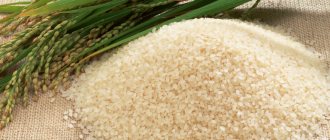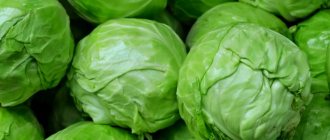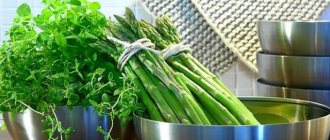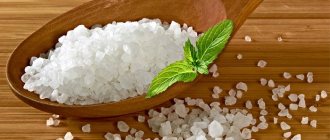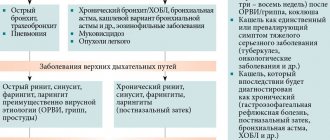Cottage cheese products during breastfeeding
The menu during lactation is meager and monotonous. You need to constantly add foods containing vitamins and microelements. Cottage cheese is useful in this regard; doctors recommend it to all breastfeeding women. It contains calcium, protein, many vitamins and other valuable substances that are quickly absorbed. For this reason, not a single gram will be deposited in adipose tissue.
This fermented milk product helps maintain strong bones and muscle strength. In children, calcium is actively involved in the formation of cartilage and bone tissue. Valuable elements of the product help strengthen the immune system. Constant consumption of cottage cheese helps to grow beautiful hair, strong nails, and strong teeth.
Cottage cheese: useful properties and preparation at home
Cottage cheese is the main component of the casserole. It is necessary for the rapid recovery of a nursing mother after childbirth, as well as for the proper growth and development of the baby.
Cottage cheese contains proteins and carbohydrates, vitamins and beneficial elements. Calcium and phosphorus are involved in the formation of bone tissue. Due to its low fat content, cottage cheese is classified as a dietary product. In addition, the product is characterized by the accessible form of proteins. This reduces the risk of allergies in infants to a minimum.
Cottage cheese prepared at home is healthier and tastier than store-bought. Moreover, you will be confident in the freshness and safety of the product. We offer a quick recipe for homemade cottage cheese. You only need milk and kefir.
Pour two liters of milk into a container and put on fire. Stir the milk as it heats. As soon as it boils, add a liter of kefir. Keep the mixture on the stove for two to three minutes. Make sure it doesn't boil. Turn off the heat and let the mixture sit for five minutes. Then place the mixture in a sieve to allow the whey to drain. In just half an hour you can prepare 600 grams of cottage cheese.
The traditional recipe for making cottage cheese will take more time. Fresh milk should be left at room temperature for a day. After which the sour product is placed on low heat. Make sure the milk does not boil. When it curdles, remove from heat and pour the milk into a sieve lined with cheesecloth. To prepare 600 grams of curd mass you will need three liters of milk.
What should not be in a casserole?

When making cottage cheese casserole for a nursing mother, you need to limit sugar and salt, or better yet, eliminate them completely.
Salt
Salt is not recommended by experts for lactostasis, mastitis, and large amounts of milk. It retains water and provokes thirst, which will further worsen the woman’s well-being. When making cottage cheese casserole yourself, you need to give up salt or halve its dosage.
Sugar
Sugar has a negative effect on the body:
- can change taste and provoke addiction to unhealthy food;
- Regular consumption of sweet foods will lead to excess weight and dental problems;
- interferes with the absorption of calcium and vitamins;
- causes the pancreas to work to the limit, which can cause diabetes;
- provokes excitement of the nervous system - aggressiveness, hyperactivity, sleep disturbance appear;
- The functioning of the digestive system is disrupted - problems with stool arise, intestinal gases accumulate, and allergies appear.
You need to give sugar to your baby as late as possible, preferably after a year, ideally after three.
In the first month of breastfeeding, it is also better to avoid cinnamon, vanillin, honey, and raisins in the dish. All these components can cause an allergic reaction in a child and bloating.
Is it possible for a nursing mother to have a casserole?
Thanks to its rich composition, cottage cheese has a beneficial effect on the health of mother and baby. The advantages of the product include:
- high content of essential protein;
- normalization of digestive processes;
- prevention of pathologies of the heart, blood vessels and nervous system;
- increasing the concentration of hemoglobin in the blood - this is especially important for pregnant and lactating women;
- hypotensive effect.
Under the influence of temperature, the proteins in the cottage cheese begin to break down, so in the casserole they will become easier and more accessible for digestion. A woman during lactation can safely consume this dish and then feed her baby. After heat treatment, cottage cheese rarely provokes allergies in children.
Also, a casserole made from cottage cheese for a nursing mother is valued for its low calorie content, since the product contains little fat. If you eat in moderation, you don't have to worry about gaining weight. The best raw materials for making casseroles are, of course, homemade. But if you can’t make it yourself, you can buy store-bought cottage cheese.

A dish can have a negative effect on the body only in 2 cases:
- Preparation from low-quality curd mass. There is no need to choose the cheapest product, as carcinogens and other harmful components may be added to its composition. Because of this, the dish will not be healthy at all.
- Binge eating. If you overeat, even the healthiest product will be harmful to your health.
Cottage cheese casserole can be made with various tasty additives: dried fruits, fruits, berries, carrots or other vegetables. Apples are considered the healthiest and safest fruit during lactation. Green apple puree can be safely consumed in the first month after childbirth. Dried fruits are also no less useful. They retain beneficial qualities like fresh fruits, but at the same time are easier to digest by the body. These are the most suitable additives for casseroles during lactation. After comparing all the qualities of the product, the answer to the question - can a nursing mother have cottage cheese casserole - is positive. You can prepare the dish in the oven, slow cooker, or microwave. When breastfeeding, it should be consumed a maximum of 3 times a week.
Contraindications for use
It is not recommended to include cottage cheese desserts in the menu for nursing mothers who have been diagnosed with lactose intolerance. This condition involves giving up all dairy products.
Another limitation. If a mother or baby suffers from constipation, then cottage cheese casseroles should be excluded from the diet or strictly limited in consumption. You can eat no more than 70 g every other day. You need to be especially careful if a woman has had a caesarean section. In this state, problems with the digestive system and intestines are very dangerous. Cottage cheese belongs to the group of fixing products.
If a nursing mother has an individual intolerance to cottage cheese, then there is no need to eat it. A child may also develop a similar intolerance, which will lead to bloating, diarrhea, constipation, and allergic manifestations.
When to eat?
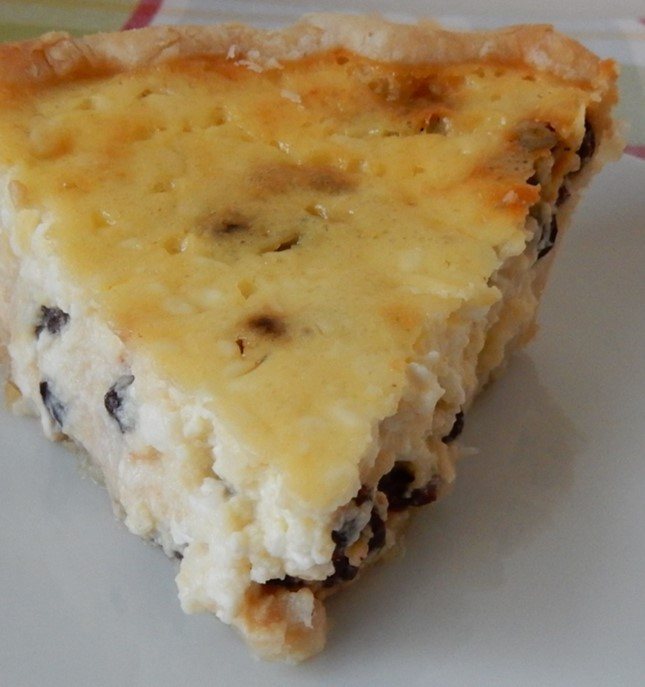
Cottage cheese casserole with apples can be used as a main dish during breastfeeding. It is suitable for breakfast or dinner. You can also use this product as a snack between main meals. The dish is low in calories, although everything here will largely depend on the products you use. It is recommended to include cottage cheese casserole in your diet a couple of times a week.
Homemade cottage cheese for casserole
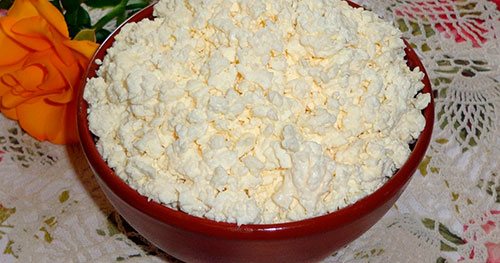
It is better to introduce cottage cheese into the menu of a nursing woman in the form of a variety of dishes. You can prepare casserole and cheesecakes. When cooked, the cottage cheese will lose some of its valuable qualities, but this will not greatly affect the woman’s condition.
It is not recommended to eat raw cottage cheese. This product does not last long, spoils quickly, and is easy to poison. If you really want raw cottage cheese, it’s better to cook it yourself, it’s not difficult.
Fresh milk is forced to sour by leaving it overnight in a warm place. If it sours for a long time, the cottage cheese will not be tasty. Adding sour kefir to the milk will help make it sour. It should not be sweet, without additives. You can place a container of milk in hot water. Pour the sour milk into a saucepan (not enameled) and place on low heat. Bring to the point where it almost boils and begins to curdle. If you overcook the cottage cheese, it will become hard. Pour into a colander lined with gauze. Wait until the whey drains. Great product ready! It can be stored for up to 2 days.
For a young mother, it is better not to fry cheesecakes, but to bake them in an oven or slow cooker. Fried foods should be postponed until a later date.
What does the casserole consist of?
There are many recipes for cottage cheese dishes: some contain a minimum of ingredients, others have a more varied composition. As a rule, to prepare a casserole, take:
- low-fat cottage cheese;
- wheat flour or semolina;
- sugar;
- egg;
- sour cream;
- butter.
Low-fat cottage cheese
This is the main component of the casserole. If the cottage cheese is of low quality or spoiled, then the dish will not be healthy. A product is considered stale when:
- emits an unpleasant odor;
- has a grayish color;
- has a viscous consistency.

It is better to cook cottage cheese yourself. Here is his simple recipe:
- Pour 2 liters of milk into a saucepan and place on the stove.

Pour 2 liters of milk into a saucepan and place on the stove - Bring the milk, stirring, until it boils.
- Add 1 liter of kefir to the boiling liquid, keep on fire for 2-3 minutes, stirring (the mixture should not boil).
- Remove the pan from the stove and leave for 5 minutes.
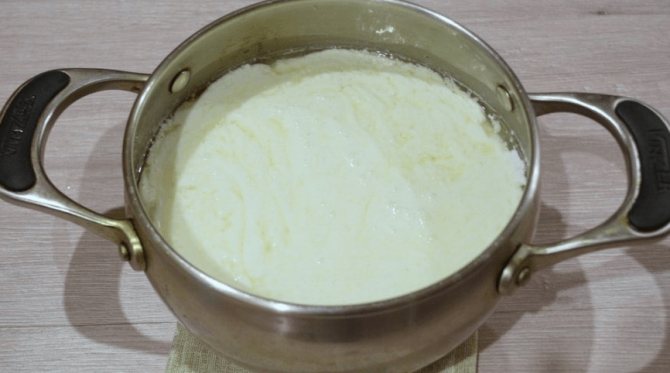
Remove the pan with milk and kefir from the stove and leave for 5 minutes - Place the resulting mass in a sieve.

Pour the resulting mass of milk and kefir into a sieve. - When the whey has drained, the curd is ready.
So in 30 minutes you will get half a kilo of fresh, high-quality product. Store it for no more than two days.
Flour or semolina
Wheat flour contains gluten, which can harm 4% of babies. Therefore, when breastfeeding, it is recommended to use gluten-free corn flour instead.
If you still settle on wheat flour, then do not take the highest grade: to make the product lighter, artificial brighteners are used. Buy first grade flour.
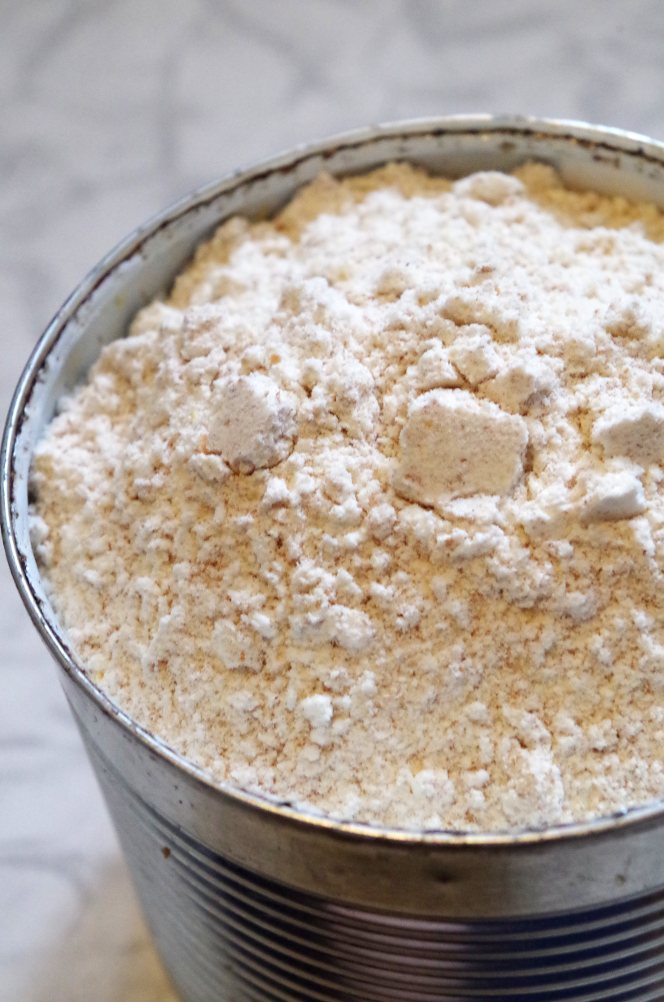
Do not replace flour with semolina. Breastfeeding experts do not like semolina and advise avoiding it during lactation. “There is more harm than good,” is their verdict. The reasons for this are as follows:
- semolina is processed wheat, which means it contains a lot of gluten;
- the substance phytin in semolina interferes with the absorption of iron, calcium, and vitamin D;
- The substance gliadin in cereals interferes with the digestion of food. As a result, the child begins to experience colic and bloating.
Sugar
There are few foods with sugar on a nursing mother's menu: the baby reacts negatively to sweets and may have an allergic reaction. In addition, sugar is difficult to digest, upsetting the baby's digestion.
Sometimes, instead of regular sugar, cane sugar is used, which contains fewer heavy carbohydrates, or fructose, a natural low-calorie product.
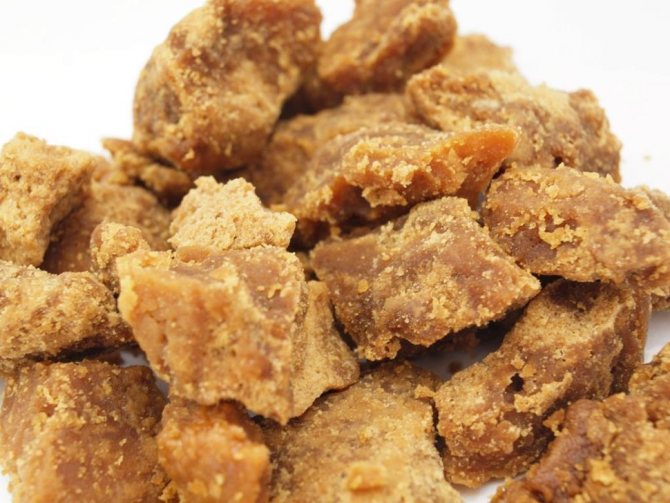
Modern sugar substitutes, which are produced in industrial conditions, should be excluded from the diet during lactation due to harmful additives. A small amount of sugar in cottage cheese casserole will not harm either mother or baby. However, if a woman has eaten her daily portion of a sweet dish (100 g), it is better to avoid other foods with sugar that day.
Eggs
Some doctors recommend introducing chicken eggs into the diet when breastfeeding 3 months after birth, while others suggest that nursing mothers give up eggs altogether. Egg white is dangerous for a baby - it can cause allergies . However, as an ingredient in a separate dish, the product is not so harmful, so it is allowed to add it little by little to baked goods, but it is better to do this not in the first 3 months after birth.
Quail eggs, according to pediatricians, successfully replace chicken eggs - their protein is not so aggressive, but can also cause allergies.
To check whether the egg is spoiled, it is dipped in water. When hydrogen sulfide accumulates inside and gas forms in the rotten product, the egg floats to the surface. It cannot be eaten.

If the egg floats in the water, then it is bad
Sour cream
Like fresh cottage cheese, sour cream is a “full-fledged” fermented milk product on a mother’s table from the first month of breastfeeding. The shelf life of low-fat 15% sour cream should not exceed 7 days.
Fattier sour cream can upset the baby’s digestion: the child’s intestinal enzymes are not yet able to absorb such complex substances. Sour cream will help you get the following benefits:
- improve the functioning of blood vessels and the heart;
- increase immunity;
- normalize digestion;
- calm your nerves;
- strengthen bones;
- improve the condition of hair, skin, nails.
However, too much love for sour cream will turn the pros into cons. The baby will signal you about this with an allergic reaction. In the first month of lactation, one teaspoon of sour cream per day is enough. Then the portion is increased to 2 tablespoons. Sour cream should not contain chemical additives.
Butter
Butter contains vitamins A, D, E, valuable microelements and unsaturated fats. Oil in an amount of 30 g per day will not harm a nursing mother or baby, but in the first 3 months of the baby’s life it is better to avoid the product. It is made from cow's milk, the protein of which is a strong allergen. The oil contains another harmful component - cholesterol.
You cannot fry food in butter: it becomes saturated with fat and releases toxins and carcinogens. The best way to use butter is to add a small piece of it to the finished dish.
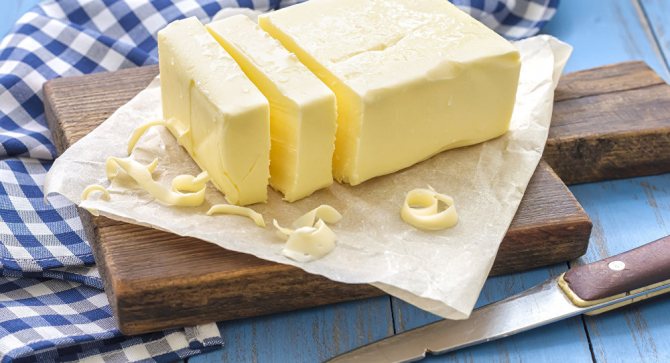
Butter will not harm the baby if the mother does not use it for frying and eats a piece a day
Selection of cottage cheese in the store
For a nursing woman, you need to choose a product with a fat content of 9%. It should not contain vegetable fats, only milk (not powdered), bacterial starter, calcium chloride and rennet (with it the product contains more calcium).
Signs of quality cottage cheese are:
- milky white color;
- the cottage cheese should crumble easily, even if pressed into packs;
- the product cannot be liquid; the paper packaging may be wet from dripping serum;
- has the smell of milk;
- high price. From 3 liters of milk you can prepare only 600 g of high-quality cottage cheese. This is the reason for the rather high prices for this product. If there is a decrease, it means that there have been changes in production technology, and non-natural components have been included in the composition.
Grainy cottage cheese does not always mean quality and naturalness. Modern technologies have figured out how to make a beautiful fermented milk product that looks like a rustic one. You can roll frozen drops of silicone in curd powder. The main thing is not to buy products of such technologies.
You should not buy a loose product; it may be of good quality, but the lack of proper packaging makes the product vulnerable to pathogens. Cottage cheese spoils very quickly; it is a favorable environment for the proliferation of microbes due to its easily digestible protein. This can be avoided in the original packaging, but a loose product does not have reliable protection.
Preparing a casserole using a multicooker
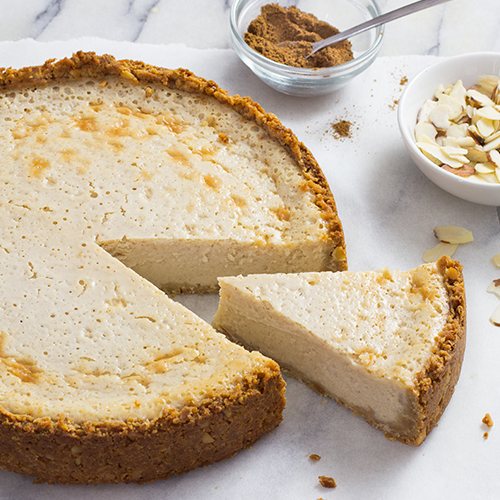
You can make a curd delicacy in another way. Many housewives today prefer to use a multicooker for these purposes. To prepare you will need the following ingredients:
Place semolina, cottage cheese and sugar in a container. The ingredients must be mixed thoroughly. Mash the banana with a fork and add to the mixture. After this, put the resulting mass into a multicooker bowl greased with butter. The dish must be baked for 35 minutes. The casserole turns out tender with a pleasant creamy taste.
Oven casserole recipe
Baked cottage cheese is better absorbed, since the protein structure changes during the processing process. Less likely to cause discomfort to the baby. After cooking, all pathogenic microorganisms in the product die, which is also important for the body of a small child.
Cottage cheese casserole is not at all difficult to prepare in the oven for a nursing mother, following our recipe. This quick and very easy to prepare dish will bring a lot of pleasure.
Dish components:
- cottage cheese – 500 g;
- chicken egg – 1 piece;
- flour or semolina - 3 large spoons;
- sugar – 2 spoons;
- sour cream – 2 spoons.
Cooking process: beat the egg with sugar, add cottage cheese, flour (semolina). Grind everything well. Grease the container with vegetable oil and place the dough. Spread sour cream on top for a beautiful color. Cook in the oven for 40 minutes at 180 degrees. Allow the casserole to cool before transferring to a plate.
Cottage cheese casserole during breastfeeding
Dairy products quite often fall into the category of prohibited during breastfeeding, since protein is poorly digested by the baby.
In this case, a cottage cheese casserole for a nursing mother can become a real godsend, because heat treatment of the product somewhat changes its properties. We will talk about the benefits and harms of this rather tasty dish below, and also give several recipes for its preparation.
Cottage cheese and casserole
Nutritionists have been debating for many years about how healthy milk is in its pure form. Many are of the opinion that the use of this product brings at least some results only at a young age, but for adults it is absolutely useless and sometimes harmful.
The same experts have a completely different point of view regarding fermented milk products. Such food is definitely considered healthy, and its consumption is necessary.
When we talk about breastfeeding, a number of problems arise here. They are connected primarily with the fact that the baby’s digestive system works quite poorly in the first months of life. It is difficult for her to cope with the absorption of complex substances and their decomposition.
In addition, there is always the possibility of an allergic reaction. It is expressed in redness of the skin and rashes on it. There may also be problems with the baby's stool, constipation, bloating and colic. Of course, most often such manifestations occur when the mother consumes milk in its pure form, but there are also frequent cases of reactions to fermented milk products.
Surprising is the fact that cottage cheese casserole in almost 100% of cases does not cause an allergic reaction in a child.
Interestingly, this is observed even in those children who react poorly to the addition of whole milk and even fermented milk products to their mother’s diet.
For this reason, the presence of cottage cheese casserole in the diet of a young nursing mother is considered mandatory. But you shouldn’t be too zealous; experts recommend eating this dish no more than 1-2 times a week, and the portion should not exceed 200-300 g.
How to prepare cottage cheese casserole
There are several ways to prepare this dish, and the result obtained as a result of each of them differs significantly from each other.
The fastest and easiest way to make a casserole is in the microwave. It's no secret that this device has a detrimental effect on the properties of products, destroying the beneficial substances contained in their composition. In addition, the dish prepared in this way has a rather specific smell, which is unpleasant even for an ordinary person, not to mention a nursing mother with a sensitive sense of smell.
Modern technologies have given us such a wonderful and useful device as a multicooker. With its help, the casserole turns out juicy, tasty and guaranteed without any burnt areas. In addition, it is quite simple to make, and the cooking process itself does not take much time.
The most delicious and aromatic dish can be obtained if you use the oven. This is a kind of classic that allows you to prepare a truly amazing dish that will definitely delight the taste buds of a young mother. This method is often used when additional ingredients are added to the casserole to increase its juiciness.
The benefits of cottage cheese casserole
Surprisingly, the cottage cheese in this casserole undergoes changes for the better. For example, under the influence of high temperatures, the structure of milk protein changes, and it becomes easily digestible even for the fragile digestive system of a newborn.
The abundance of calcium and phosphorus, for which fresh cottage cheese is so famous, also remains at the same level. As you know, these elements are vital for the intensive growth of the baby, since they are a kind of building material.
In addition, cottage cheese itself is characterized by a low fat content, the same property is transferred to the dish prepared on its basis. This means that eating the casserole will not negatively affect the figure of a nursing mother, and her breast milk will not increase its fat content. Which is very important, because its increase leads to the fact that the baby is saturated with fore milk and does not suck out the useful hind milk.
Harm of cottage cheese casserole
In fact, cottage cheese casserole cannot cause any harm as such. There are only two conditions under which its use can have a negative effect.
Store-bought cottage cheese
The first case is the use of low-quality purchased cottage cheese. This fermented milk product is relatively expensive and young mothers use cheaper varieties to save money. This should not be done, since such cottage cheese often contains harmful substances, and it itself has absolutely no benefit.
The ideal option is to use homemade cottage cheese; preparing it is quite simple, and you will be completely confident in its quality.
Binge eating
The second option is exceeding the established volume standards. Even the healthiest food, if consumed in excess, can cause irreparable harm to the body. Cottage cheese casserole is no exception to this rule.
Do not forget that in addition to healthy cottage cheese, this dish also contains other components that are not particularly dietary, so it is best to observe moderation.
Cottage cheese casserole: recipe for a multicooker during breastfeeding
This recipe is incredibly simple and has a minimum of ingredients. Thanks to this, you can be almost 100% sure that eating such a delicacy will have absolutely no effect on the baby’s health and will not cause an allergic reaction.
Ingredients
- Low-fat cottage cheese – 0.5 kg;
- Semolina or wheat flour – 3 tbsp;
- White granulated sugar – 3 tbsp;
- Butter – a small piece.
How to make cottage cheese casserole in a slow cooker for a nursing mother
- It is best to grind the cottage cheese, then your casserole will be as tender as possible.
- Add flour and sugar to it and mix everything thoroughly.
- Lightly grease the multicooker bowl with butter.
- We put the resulting mass into the mold and set the “baking” mode for 35-40 minutes. After half an hour, you can turn the casserole over to create an even crust on its surface.
If you wish, you can diversify this recipe by adding, for example, a banana. The main thing is to first monitor the baby’s reaction to the added ingredient in order to avoid an allergic reaction.
Enriched cottage cheese casserole in the oven for a nursing mother
Ingredients
- Low-fat cottage cheese – 0.5 kg;
- Chicken egg – 1 piece;
- Semolina or wheat flour – 3 tbsp;
- Apple – 1 piece;
- Low-fat sour cream – 2-3 tbsp;
- White granulated sugar – 3 tbsp.
How to cook a casserole while breastfeeding
- Wash the apple, cut it into two halves and bake. After this, cut out the core with the seeds and peel off the skin.
- Grind the cottage cheese to form a finely dispersed mass.
- Separately beat the egg and add it to the cottage cheese, add sugar, flour or semolina.
- Add finely chopped apples and mix everything thoroughly.
- Grease the mold with vegetable oil and spread the resulting mass.
- We grease our future casserole with sour cream on top.
- Place in a preheated oven for half an hour until a beautiful golden crust forms.
The cottage cheese casserole prepared according to this recipe for a nursing mother is distinguished by its juiciness and aromatic crispy crust. Due to the fact that the apples were pre-baked, they have a soft structure and release juice well.
mama-news.ru
Multicooker recipe
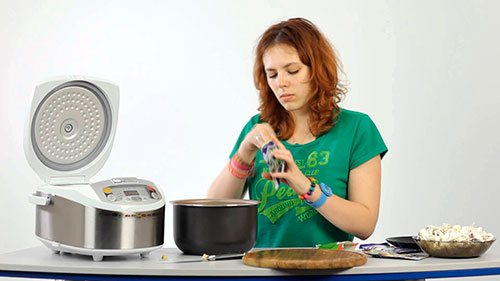
Many nursing mothers forcefully eat healthy cottage cheese. A casserole would be a great alternative. It has a different taste, but is just as valuable and retains all its beneficial properties. To prepare the dish in a slow cooker, we use fresh cottage cheese. Leaving it for a long time will not work, even if it was stored in the refrigerator.
Components:
- cottage cheese – 500 g;
- semolina – 3 large spoons;
- banana – 1 piece;
- sugar – 3 spoons;
- a little butter.
Manufacturing process: mix cottage cheese, sugar, semolina. Peel the banana and mash it. Add it to the mass, stir well again. Grease the multicooker mold with oil and lay out the prepared dough. Let it cook for 35 minutes, turn on the baking mode.
Basic recipe for cottage cheese casserole with photo
Let's start with the simplest cottage cheese casserole recipe for a nursing mother. This will be the minimum that you can afford almost every day. A small piece of this dessert will satiate, satisfy the need for sweets and fill the body with calcium and other necessary elements.
Ingredients:
- Cottage cheese – 500 gr
- Egg - 2 pcs.
- Semolina – 50 gr
- Butter - 50 g
- Sugar - 2-3 teaspoons
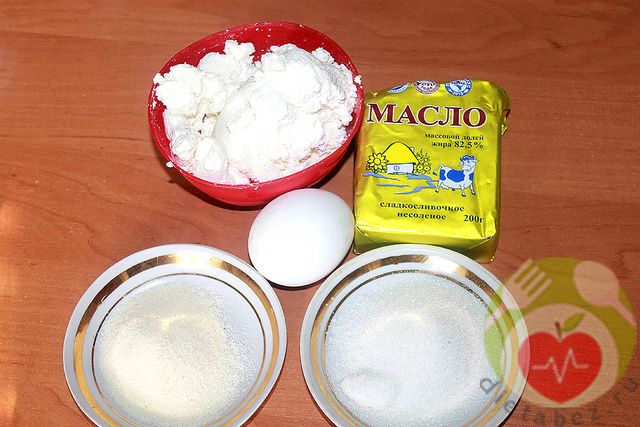
How to cook cottage cheese casserole for a nursing mother in the oven
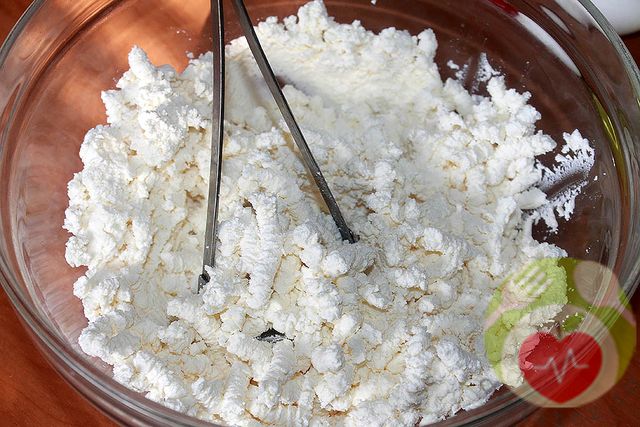
To obtain a homogeneous casserole structure, chop the cottage cheese by rubbing it with a potato masher. You can also grind it through a sieve or punch it with a blender.

Beat 2 medium eggs into the cottage cheese.
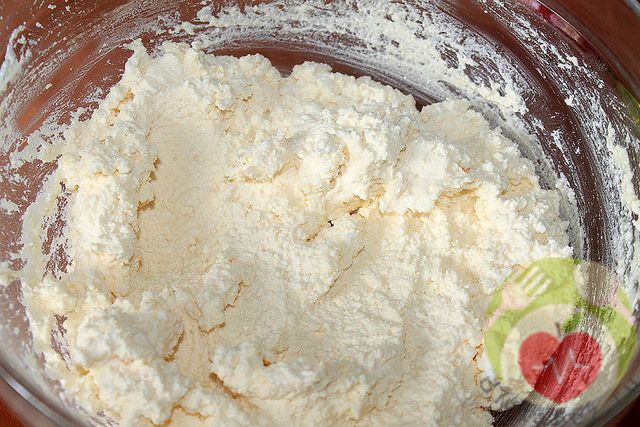
Stir the mixture well, additionally chopping the pieces of cottage cheese.
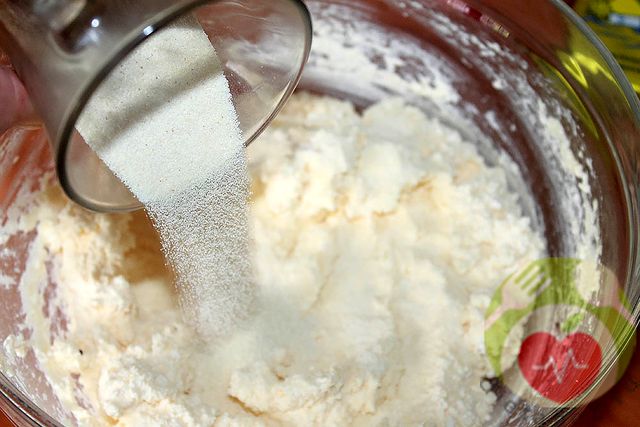
Then add a little semolina. Mix everything thoroughly and leave the mixture to swell the semolina for 10-12 minutes.
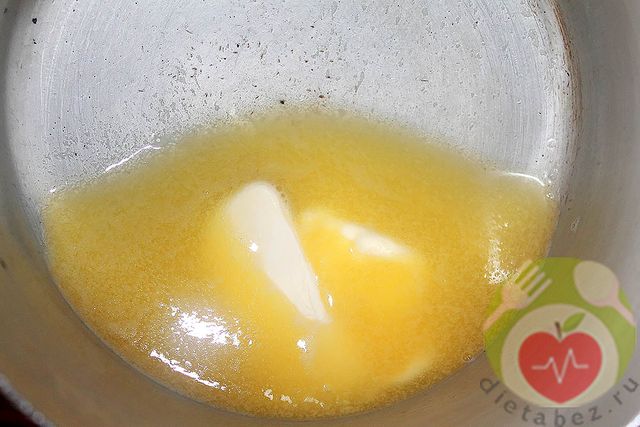
While the cereal swells, melt the butter until liquid and cool to room temperature.
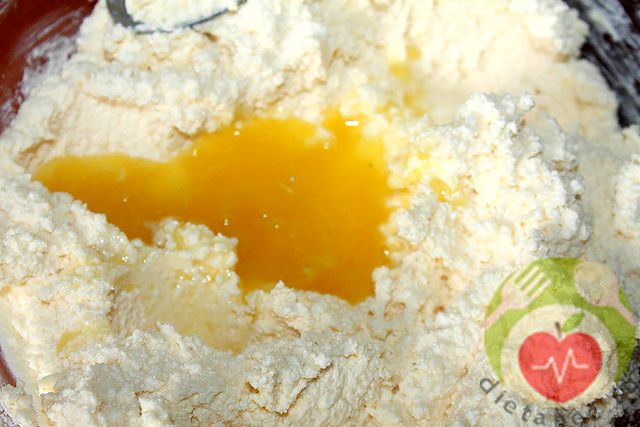
Pour oil into the dough and mix everything.
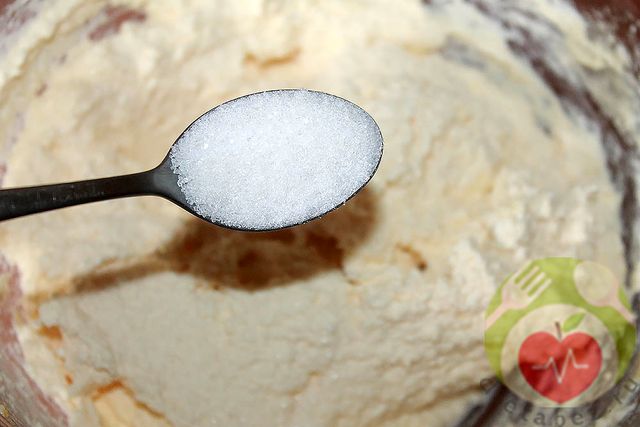
Add sugar last. Mix the mixture again.
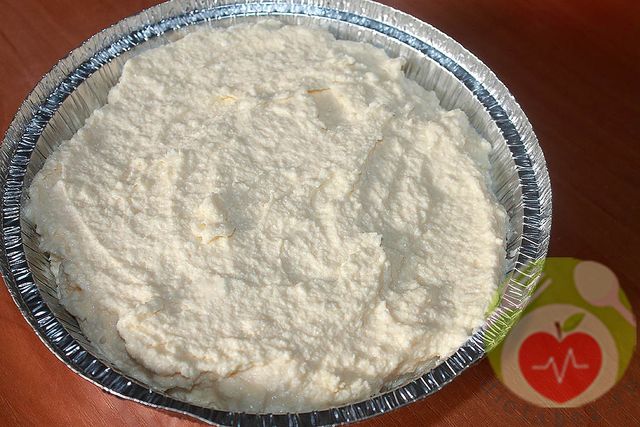
Place the base in a baking dish and smooth the top with a spoon. If you bake in an iron pan without parchment, then the dishes should be greased with a thin layer of vegetable oil.

Bake the cottage cheese casserole in a hot oven at 180-190C for about 30 minutes. Of course, the cooking time will directly depend on the size of the product. If you have a thin casserole, then 20 minutes may be enough. But for a tall product, the time can be increased to 40 minutes.
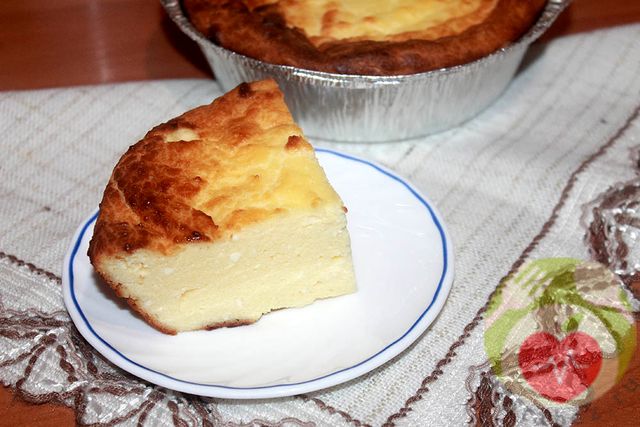
Let the dessert cool slightly and then serve.
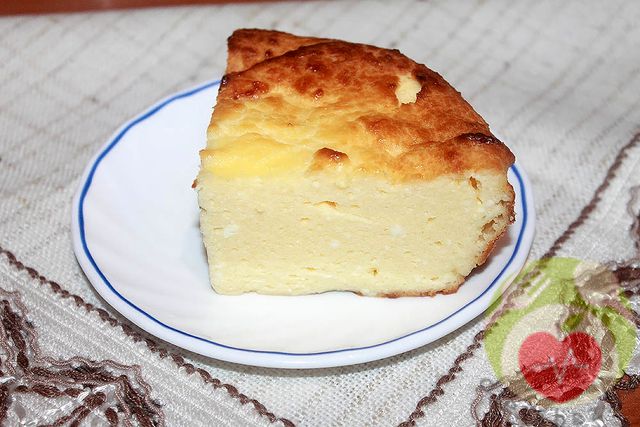
Cut the casserole into portions and enjoy a well-deserved dessert.
What is allowed to be added to the casserole?
Usually nuts, raisins, bananas, apples, and dried apricots are added to cottage cheese casseroles. After cooking, eat with jam and sour cream. But a nursing woman has her own dietary rules. Not all of these components can be added so as not to harm the baby.
Cottage cheese can be included in the maternal diet from the first day after birth, and raisins only after 3 months. For this reason, you will also have to add it to the casserole after a certain time. The same applies to other dried fruits and fruits. Only apples are allowed immediately after childbirth; they can be added when preparing a dish.
Sour cream is not recommended for use as an additive to casseroles. This is a fatty product and can cause bloating and colic in the baby. It will only be useful during the cooking process. According to the recipe, sour cream is lubricated before placing in the oven. This helps form a nice crust and beautiful color.
Portioned casserole - cottage cheese muffins with yogurt
A very simple recipe for cottage cheese muffins that doesn’t require much effort. This casserole is convenient because each piece is initially portioned, so it is very convenient to feed this dessert to the whole family.
Ingredients:
- Cottage cheese – 500 gr
- Egg - 2 pcs.
- Yogurt – 150 gr
- Semolina - 2 tbsp. spoons
- Sugar - 2.5 tbsp. spoons
- Baking powder - ½ teaspoon
How to prepare portioned casserole in the form of muffins
- Beat eggs with sugar, mix semolina with baking powder.
- Mash cottage cheese with yogurt.
- Pour the sweet egg mixture into the curd mass and add semolina.
- Blend the entire mass with a blender until completely smooth and chopped.
- Leave for 10-15 minutes for the cereal to swell.
- During this time, heat the oven to 180C.
- Place the curd mixture into silicone molds, leaving a little space to the edge.
- Bake cheesecakes in molds for 30 minutes.
How to eat cottage cheese during pregnancy?
According to the rules of dietetics, it is enough for a pregnant woman to eat cottage cheese 2-3 times a week, 150-200 grams. It is better not to choose fatty varieties, especially in recent months. Cottage cheese of medium fat content (up to 7%) can be eaten occasionally. It is best at lunch or in the evening, washed down with low-fat kefir.
ATTENTION! Excessive amounts of cottage cheese complicate the functioning of the kidneys, so you should not increase the recommended portions.
REFERENCE! Cottage cheese can be consumed not only in its pure form. It is not forbidden to improve the taste with your favorite berries, dried fruits, fruit yogurt or honey. Dishes such as puddings and cheesecakes with cottage cheese, curd soufflé, salads and casseroles diversify the diet.
IMPORTANT! To this day, there is a myth that eating cottage cheese in the last trimester of pregnancy can complicate childbirth. Allegedly, the baby’s bones may harden so much that passage through the birth canal will be complicated, the birth will be delayed and the mother will experience more pain. We hasten to reassure you: you can eat cottage cheese from the first to the very last day of pregnancy, and this will not create any difficulties for childbirth.

